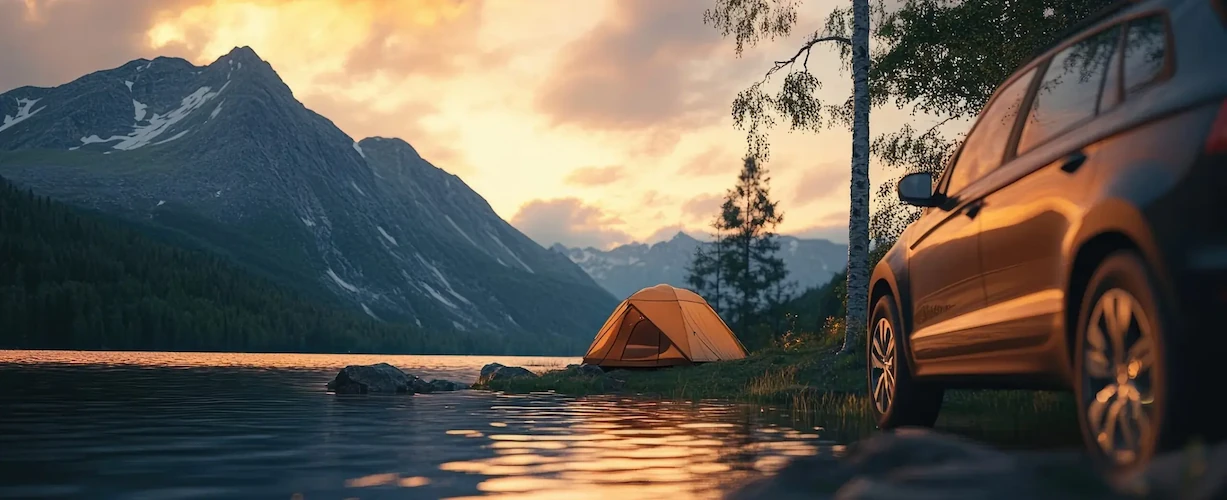 Although accidents involving trains and cars are rare, they are almost always serious. When travelling in your car rental vehicle, you need to not only respect trains, but also railway crossings. Most drivers cross dozens of railways each week without complication, or ever even seeing a train. But that doesn't mean you should forget about them! Here are the top 5 things to consider when crossing a railway in your rental car vehicle.
Although accidents involving trains and cars are rare, they are almost always serious. When travelling in your car rental vehicle, you need to not only respect trains, but also railway crossings. Most drivers cross dozens of railways each week without complication, or ever even seeing a train. But that doesn't mean you should forget about them! Here are the top 5 things to consider when crossing a railway in your rental car vehicle.
1. Always expect a train, even if you can't see one
Many rail crossing are hidden or obstructed, meaning it may be difficult to see an oncoming train. Couple that with the fact that some trains, passenger trains in particular, travel at a high rate of speed, and you will begin to understand why you don't have to see a train coming for it to be dangerous. As you approach train tracks in your car rental vehicle, slow down as you would entering any intersections, and look both ways. If it is a controlled railway crossing with lights and crossing gates, it's still necessary to slow down and look both ways. If it is an unprotected, or uncontrolled crossing, which are usually found in rural settings, it is wise, and required by law in many locations, to come to a complete stop and look both ways before crossing in your car rental vehicle. Never however, stop on the tracks. When you decide it is safe to cross, do so quickly. If weather conditions or visibility is restricted, open your windows and listen for the train horn. Although trains won't sound their horn at every crossing, this is usually a good sign that a train is on its way.
2. Respect the lights and gates
If the crossing lights are flashing, signaling a train is coming, never race to cross the tracks. If the arms or cross gates are down, you should never try to drive around the gates, or speed up to get under lowering gates. The train you hear or see, (or potentially don't see) coming, is often closer, and coming faster than you might anticipate. Don't put yourself and your passengers in a bad position. This is why it is important to slow down and respect train crossings at all times. Besides being potentially deadly, it is also illegal to cross train tracks while the lights are flashing and/or gates are down.
3. Never stop on a railway
This might seem logical, but you'd be surprised how many vehicles stop on railways in heavy traffic, or while stopping for a traffic light. In a traffic jam, or a long traffic light, you may not be able to move before the train arrives. This is one of the leading causes of train-car related accidents. If you see traffic is moving slow, don't enter the railway crossing or the area protected by the crossing gates. Leave enough space and only cross once you are sure there is enough space on the opposite side of the tracks. Also remember, just because you are not directly on the tracks does not mean you're out of danger. The average train is a minimum of 3 feet wider than the tracks. If you are stuck on the tracks because your car has stalled, or for any other reason, and you see a train coming, get out of the vehicle and quickly move away from the crossing. It takes a train a great distance to stop. For many it could take up to a mile or 2 kilometers to come to a full standstill. In this situation, your personal safety is more important than a vehicle.
4. Never race a train
Often, drivers will be travelling parallel to a train and speed up in order to "beat" it to a crossing. It's important to always obey speed limits when travelling in your rental car, and to respect the power of a train. If you are travelling parallel to a train, you know that the train travelling through the railway crossing will only be a slight delay. When racing a train, even arriving at the same time is a loss. If anything, slow down and allow the train to reach the crossing first. Then, simply stop and wait for the train before making your crossing in your independent car rental.
5. Be aware of stopping vehicles
Some vehicles, in particular school buses and some city buses, are required by law to stop at all rail crossings, even if they are no longer in service. As you approach a railway in your car rental vehicle, remain cautious of the vehicle ahead of you. Most of these vehicles will put on their four way flashers or other lights to signify they are coming to a stop. When this happens, leave some space, and allow the vehicle to safely cross. As well, even after the bus has left the rail crossing area, you should still look and listen as you cross the railway.
With a little extra caution, traveling over a railway crossing can be simple. Look for signs, check the tracks, follow the rules of the road, listen for the train's horn, respect the train and proceed when safe. If you can remember these tips, you'll be on your way to a safe and enjoyable car rental excursion.
